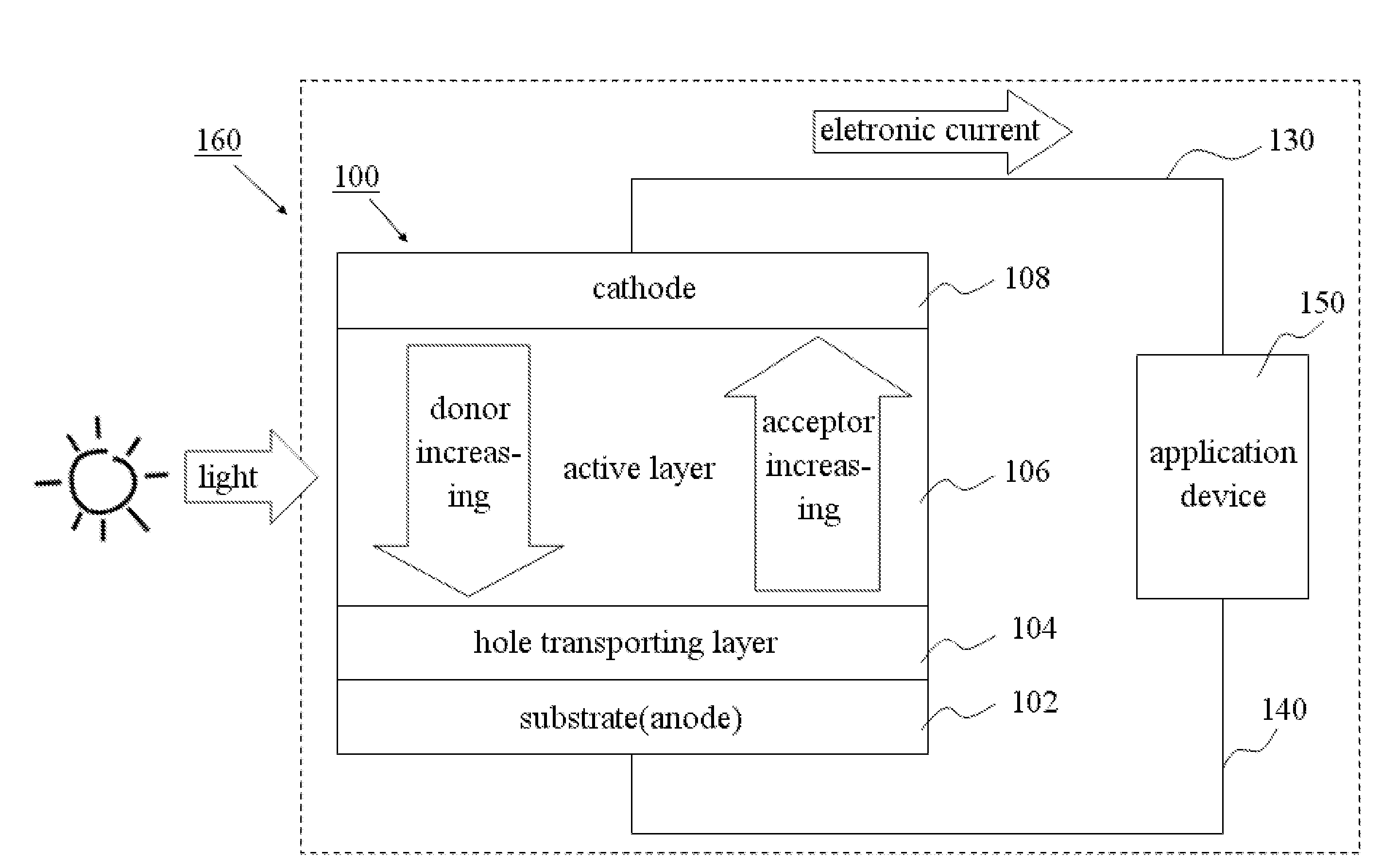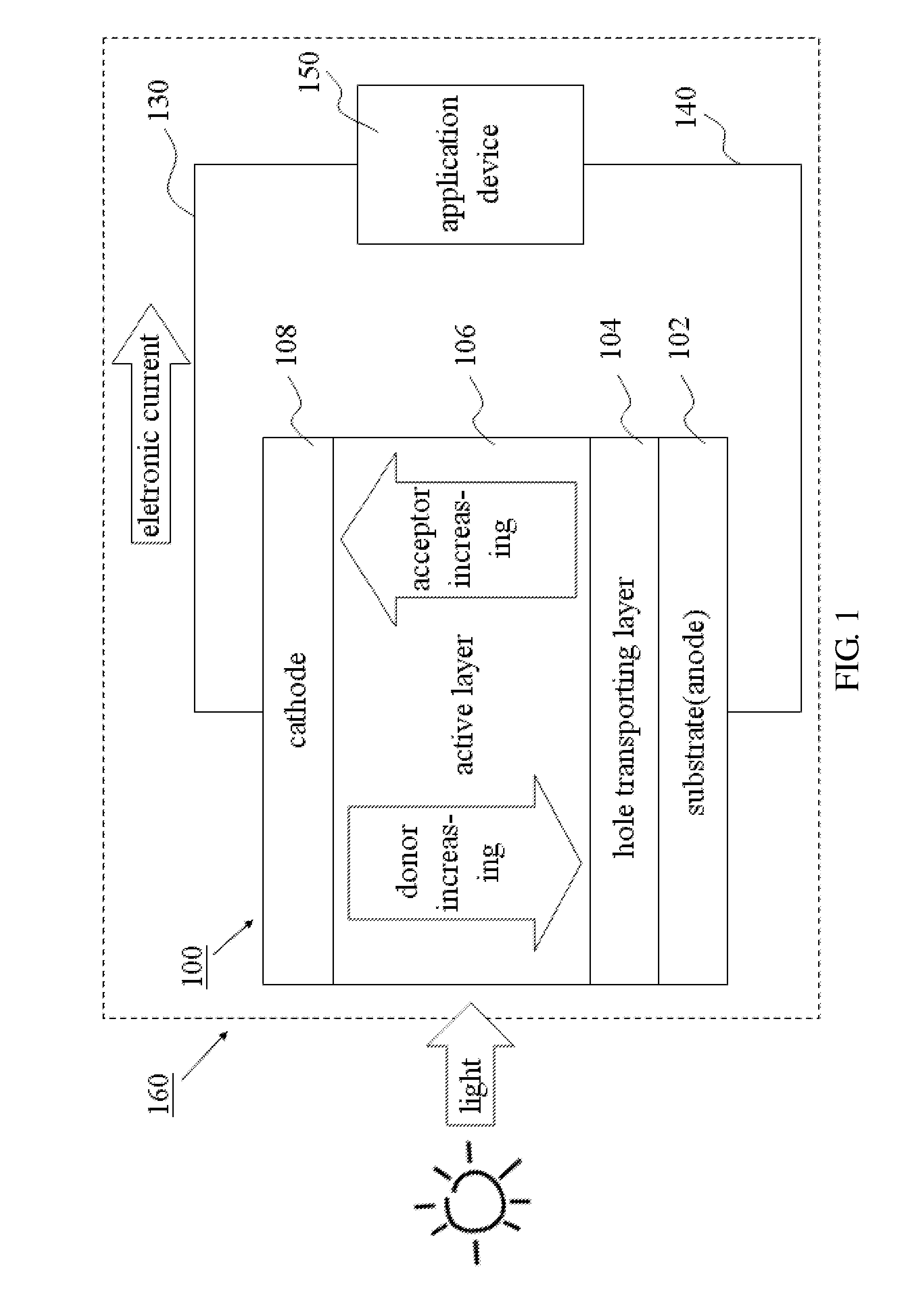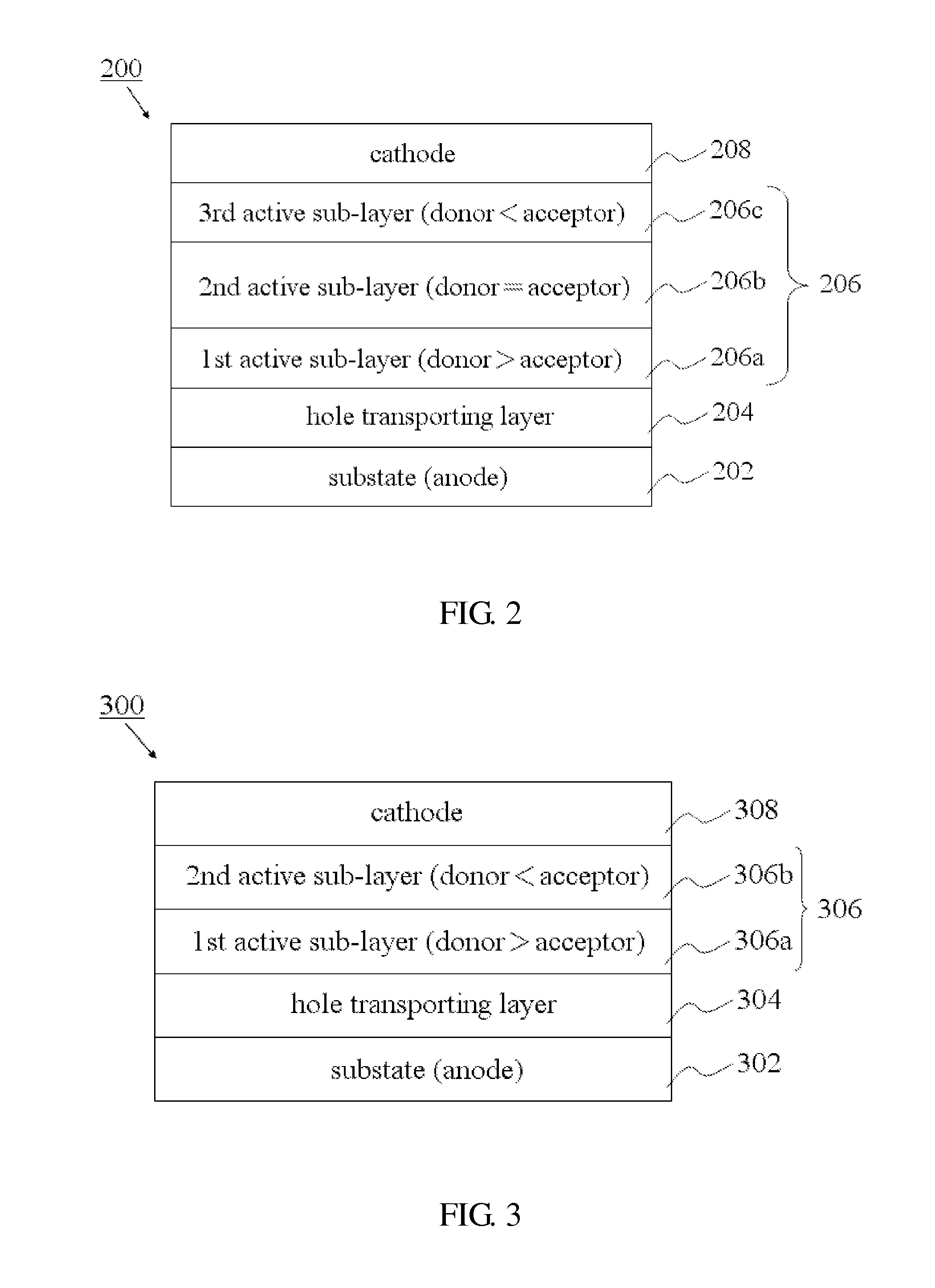Organic Solar Cell with Oriented Distribution of Carriers and Manufacturing Method of the Same
- Summary
- Abstract
- Description
- Claims
- Application Information
AI Technical Summary
Benefits of technology
Problems solved by technology
Method used
Image
Examples
Embodiment Construction
[0026]In the embodiments of the present invention, a multilayer coating process is applied to the active layer (light absorption layer), for manufacturing an organic solar cell with oriented-distribution of electron donors and electron acceptors. The probability of recombination of the carriers (including electrons and holes) before being transported to the corresponding electrodes (anode or cathode) is thus lowered.
[0027]FIG. 1 shows the organic solar system with multilayer structure according to the embodiment of the present invention. The organic solar cell 100 comprises a substrate 102 formed on the bottom thereof, as an anode of the organic solar cell 100; a hole transporting layer (HTL) 104 formed on the substrate 102, for facilitating transportation of the electron holes; an active layer 106 formed on the HTL 104, for absorbing light energy (from the sun or other light sources), and therefore called a “light absorption layer”; and a cathode 108 formed on the active layer 106,...
PUM
| Property | Measurement | Unit |
|---|---|---|
| Electric potential / voltage | aaaaa | aaaaa |
| Efficiency | aaaaa | aaaaa |
Abstract
Description
Claims
Application Information
 Login to View More
Login to View More - R&D
- Intellectual Property
- Life Sciences
- Materials
- Tech Scout
- Unparalleled Data Quality
- Higher Quality Content
- 60% Fewer Hallucinations
Browse by: Latest US Patents, China's latest patents, Technical Efficacy Thesaurus, Application Domain, Technology Topic, Popular Technical Reports.
© 2025 PatSnap. All rights reserved.Legal|Privacy policy|Modern Slavery Act Transparency Statement|Sitemap|About US| Contact US: help@patsnap.com



